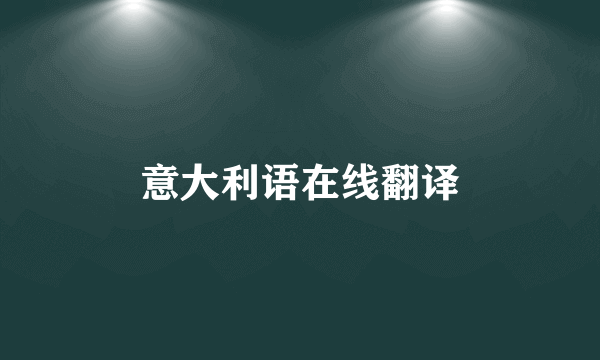意大利博洛尼亚大学基本概况
的有关信息介绍如下:
博洛尼亚大学成立于1088年,被公认为西方最古老的大学,目前在QS世界大学排名中并列188位。下面是出国留学网整理并翻译的博洛尼亚大学基本概况,供大家参考。
一、关于博洛尼亚大学
Founded in 1088, Bologna University has been student-centred whilst attracting prominent figures from science and the arts. Today it is a leader in the European Higher Education Area and famous for its beauty and integration with the city.Its teaching catalogue is diversified and tailored to the needs of present-day society: over 200 degree programmes among its 33 Departments, 11 Schools and over 81,000 students. A further 5000 are candidates for its PhDs and 3rd cycle programmes. The calibre of its graduates, its internationally renowned teachers and its quality research give it a competitive edge, especially in the job market. Bologna is the best Italian university for attraction of FP7 funds.Bologna has always favoured a multi-disciplinary, cross-cultural approach; it invests in international, multicultural training, research and services. It has formed knowledge alliances with industry and public/private organizations, and is a hub of international networks. Of its international and joint-degree programmes, 27 are taught in English. Besides the five campuses (Bologna, Cesena, Forlì, Ravenna, Rimini), there is an overseas branch (Buenos Aires) coordinating research, post-graduate training and academic liaison with Latin America. Beyond its close European links Bologna enjoys multiple international connections, with North America, Africa, Asia and Australia.
博洛尼亚大学成立于1088年,长久以来以学生为中心,并吸引了文理两大领域的重要人物。今天,博洛尼亚大学已成为欧洲高等教育区的一所领军大学,有优美的环境,与博洛尼亚联系紧密,以此著称。博洛尼亚大学的课程种类繁多,能满足当今社会的需求。其2百多个学位计划分布在33个部门和11个学院。有8千1百多名学生。另有5百位博士计划和第三轮计划候选人。其高水准的毕业生、国际知名的师资队伍和优质的研究都为学校赢得了竞争优势,特别是在就业市场竞争中的优势。博洛尼亚大学是意大利最具FP7 资金吸引力的大学。它一直偏爱多学科和跨文化方法,投资于国际多元文化培训、研究和服务。博洛尼亚大学已与企业和公共/私人组织机构建立了知识联盟,因此也是一个国际联络中心。除了与欧洲有紧密联系,博洛尼亚大学与北美、非洲、亚洲和澳洲也有多方面的国际联系。
Faculty staff and students (by QS)
师生人数
二、博洛尼亚大学的历史
The origins of the University of Bologna go way back, and it is considered to be the oldest university in the Western world. Its history is intertwined with that of the great names of science and literature, it is a keystone and a point of reference for European culture.
1008: the Bologna "Studium" was founded by students and for students. It is the oldest university in the Western world.
1888: the celebrations of the Eighth Centennial relaunched the role of the University of Bologna within Europe, thanks to the work of Giosuè Carducci, who in 1906 won the Nobel Prize for Literature.
1988: on 18 September in Piazza Maggiore, Bologna, the rectors of 430 universities from all the continents signed the Magna Charta Universitatum Europaeum during the nine hundredth anniversary of the University of Bologna, formally recognised as the Alma Mater of all universities. Subsequently signed by another 400 rectors, the Magna Charta affirms the autonomy of universities, the solid ties between teaching and research, rejecting any limits posed by "all geographical and political boundaries".
1989: previously limited to the province of Bologna, the Alma Mater initiated a programme of decentralisation throughout Romagna, becoming the most extensive of all Italian universities. In 2000 the University recognised special forms of autonomy for the Romagna campuses, establishing the scientific and teaching campuses of Cesena, Forlì, Ravenna and Rimini.In 1998 the University also inaugurated a campus in Buenos Aires.
1993: the first reform of the University Statute, inspired by the principle of autonomy of the university.
1999: on 19 June in the Aula Magna of the University of Bologna, 29 European Ministers of Higher Education signed the Bologna Declaration, establishing a European Higher Education Area. This was the start of a reform process known as the Bologna Process, committing the signatory countries to a project to restructure the university systems with a view to convergence, ending in 2010.
2012: the entry into force of the new Statute (11 January) concluded the process of university reform which began in 2010, and the implementation of the new university organisation begins.
博洛尼亚大学的历史可以追溯到很久以前。博洛尼亚大学被认为是西方世界最古老的大学,其历史早已与科学和文学领域的一些伟大人物纠结在一起。它是欧洲文化的一块基石和参照物。
1008年:博洛尼亚学院由学生成立,服务于学生,是西方世界最古老的大学。
1888年:博洛尼亚大学庆祝建校八百周年。1906年乔苏埃·卡尔杜齐获得诺贝尔文学奖,让博洛尼亚大学在欧洲的地位得到了重新审视。
1988年:9月18日,博洛尼亚大学建校九百周年。各大洲430所大学的校长齐聚博洛尼亚马乔列广场,签署了《欧洲大学宪章》,认可博洛尼亚大学为最古老的学校。随后,另4百位校长也签署了宪章。大宪章明确了大学的自治权,教学与研究之间的牢固的联系,拒绝了任何来自“地理和政治边界”的限制。
1989年:博洛尼亚大学将地方分权从先前的博洛尼亚扩大到整个罗马涅地区,由此成了意大利规模最大的大学。2000年,博洛尼亚大学认可了罗马涅地区各校区的特殊自治形式,并在切塞纳、弗利、拉文那和里米尼建立了校区,用于科研和教学。1998年,博洛尼亚大学在布宜诺斯艾利斯新建了一个校区。
1993年:在自治原则的启发下,首次实施了大学章程改革。
1999年:6月19日在博洛尼亚大学玛格纳礼堂,29位欧洲高等教育部长签署了《博洛尼亚宣言》,成立于欧洲高等教育区。这也是“博洛尼亚进程”的开始。博洛尼亚宣言将签署国纳入了计划,以期以趋同性视角重建这些国家的大学体系。该项工程结束于2010年。
2012年:始于2010年的大学改革随着新的章程介入而结束(结束于1月11日),新的大学组织结构开始适用。
[page]三、博洛尼亚大学的教研情况
1.UNDERGRADUATE
Alma Mater Studiorum offers 92 first cycle degree programmes/Bachelor (3-year full time length courses; the academic qualification is obtained after having completed 180 ECTS credits) and 12 single cycle degree programmes (5 or 6-year full time length courses; the academic qualification is obtained after having completed 300 or 360 ECTS credits). The Programme catalogue covers all subject and all sectors.
1、本科
在本科阶段,博洛尼亚大学有92个第一周期(学士)学位计划和12个单周期学位计划。第一周期学位计划属于三年全日制课程,要求完成180个ECTS学分才能拿到专业资格证书(学位)。单周期学位计划属于五年或六年全日制课程,要求完成300或360个ECTS学分才能拿到专业资格证书(学位)。课程涵盖各个学科和领域。
2.POSTGRADUATE
Alma Mater Studiorum offers 105 second cycle degree programmes/Master (2-year full time length courses; the academic qualification is obtained after having completed 120 ECTS credits).
Third cycle Programmes/postgraduates courses are also available: 43 PhD programmes, 37 Specialization Schools, 65 Professional master’s programmes.
2、研究生
在研究生阶段,博洛尼亚大学有105个第二周期(硕士)学位计划。第二周期学位计划属于二年全日制课程,要求完成120个ECTS学分才能拿到专业资格证书(学位)。
此外,也提供第三周期学位计划。第三周期学位计划包括43个博士学位、37个专门院系和65门职业硕士课程。
3.SCHOOLS
Schools of the University of Bologna coordinate the University teaching activities.
The focus of all activities of the Schools are the students, their cultural and professional growth through curricula oriented to the job market.
3、院系情况
博洛尼亚大学的教学活动由各个院系来协调完成。
院系活动的重点放在学生的文化储备和专业能力上。文化储备和专业能力又通过以就业市场为导向的课程来完成。
School of Agriculture and Veterinary Medicine
As of A.Y. 2012/2013, it is the Bologna University School of Agriculture and Veterinary Medicine that coordinates the various degree teaching activities it embraces, as activated by its respective departments.
The recent changes to University organization in application of national legislation have been deep-seated and put an end to what is broadly a hundred years of experience (the Faculties). As of October 2012, a new structure, the Schools, has come into being. The School of Agriculture a



